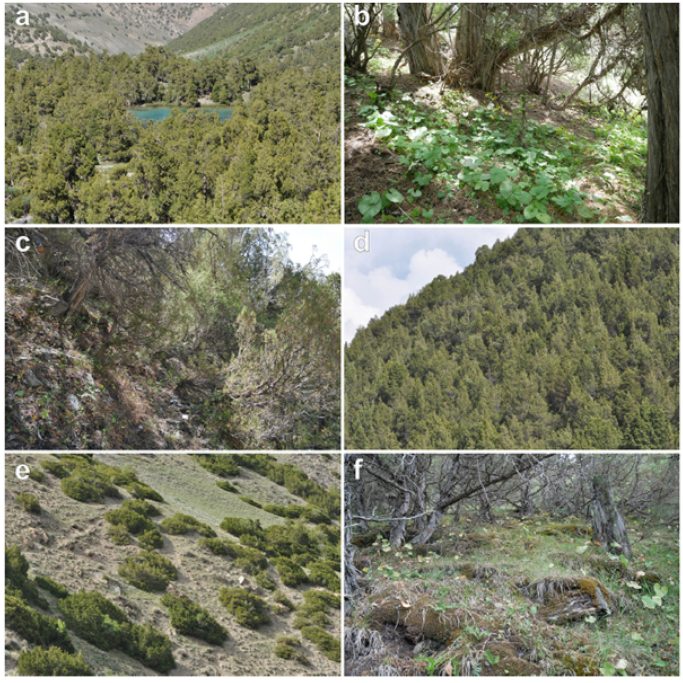W pracy przedstawiono wyniki badań fitosocjologicznych roślinności luźnych lasków jałowcowych Pamiro-Ałaju w Tadżykistanie. Na podstawie 119 zdjęć fitosocjologicznych zidentyfikowaliśmy dwa główne typy tej roślinności z jałowcem zerawszańskim i jałowcem pseudosabińskim. Okazało się, że te dwa typy lasków jałowcowych reprezentują dwie odrębne klasy roślinności, pierwsza związana z ciepłym obszarem Irano-Turańskim, druga z terenem kontynentalnej Centralnej Azji. Dotychczasowy pogląd, że głównym czynnikiem różnicującym te zbiorowiska jest głównie wysokość występowania został obalony. Laski jałowca zerawszańskiego występują głównie na południowym-zachodzie Azji, a jałowca pseudosabińskiego w Azji Centralnej, a w Azji Środkowej ich zasięgi się zachodzą dając złudne przekonanie o ich rozmieszczeniu.

Abstract
The paper presents the first syntaxonomic classification for juniper wood communities in Tajikistan with some remarks on their environmental gradients. A total of 119 relevés were sampled between 2015 and 2021 using the seven-degree Braun-Blanquet cover-abundance scale. They were classified by a modified TWINSPAN method. Diagnostic species were identified using phi coefficient as a fidelity measure. Detrended Correspondence Analysis (DCA) was used to determine relationships between samples, vegetation units and major gradients in species composition. Plant communities have been divided into two main groups. The first one is a west Irano-Turanian wood of Juniperus polycarpos var. seravschanica of the Pamir-Alai mountane belt. It occurs in two variants depending mainly on the aspect and precipitation. The second juniper wood type in Tajikistan is a stand of Juniperus pseudosabina. It prefers the northern slopes and north-eastern ranges of the Pamir-Alai and slightly lower elevations. Both juniper wood types are highly distinct in terms of species composition, especially in the moss layer, and have therefore been assigned to different classes: Pino-Juniperetea (Juniperetum seravschanicae) and Juniperetea pseudosabinae (Carici turkestanicae–Juniperetum pseudosabinae). The main factors determining the species composition of the studied associations are latitude, growing season precipitation, annual range of air temperature and precipitation of coldest quarter. Our study has shown that there are two very distinct vegetation types of the juniper wood groves in Tajikistan, which reflect the main phytogeographical division between the provinces of Turkestan and Central Asia.
Nowak A., Nobis M., Nowak S., Kotowski M., Świerszcz S. 2022, Phytosociological survey of juniper wood vegetation in Tajikistan (Middle Asia). Dendrobiology 88, 16–36 doi.org/10.12657/denbio.088.002
